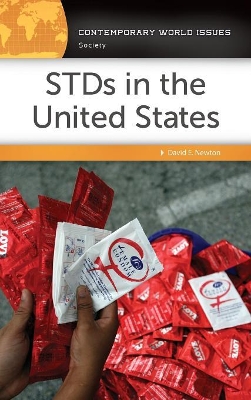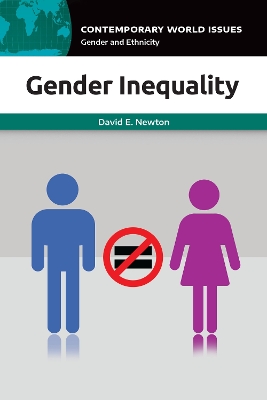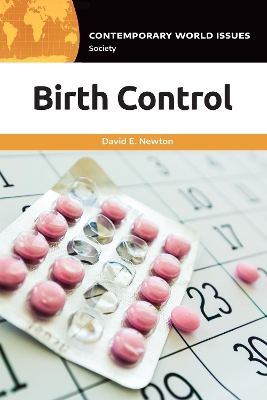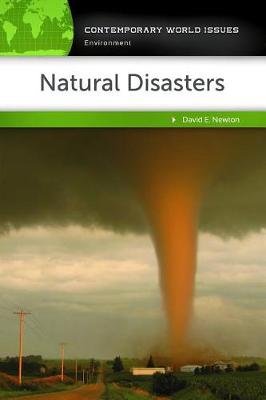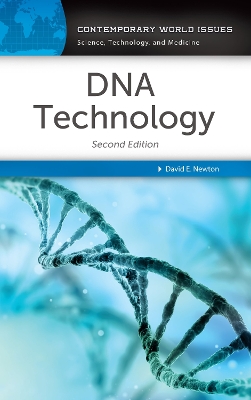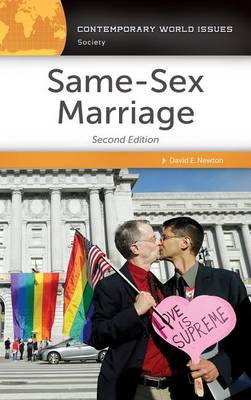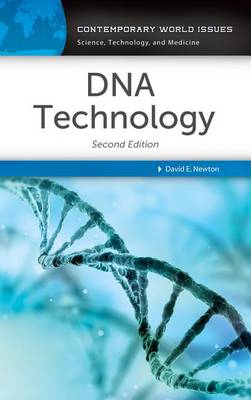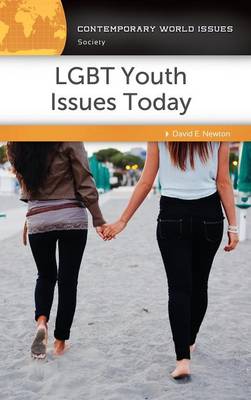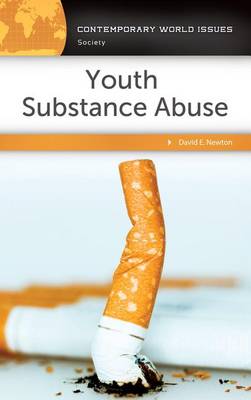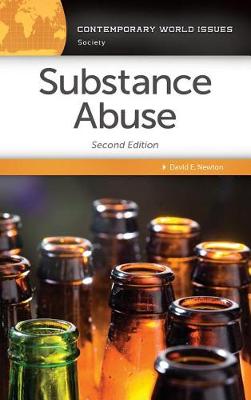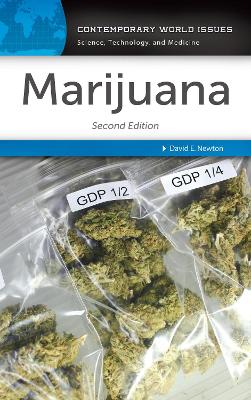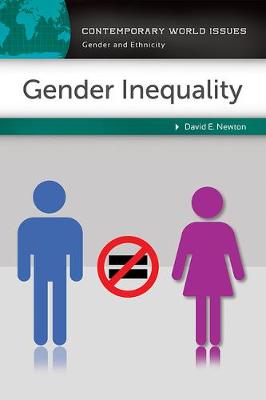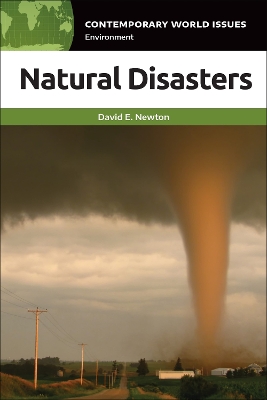Contemporary World Issues
46 total works
STDs in the United States: A Reference Handbook provides extensive background on the diagnosis, treatment, consequences, and public understanding of STDs. It also makes available to readers a host of tools and resources with which they can expand that understanding by carrying out additional research on the topic.
While this book provides much of the information about STDs found in other books for young adults, it does so in greater detail, which will help readers to make informed choices related to their sexual health. An array of resource materials includes information about important individuals and organizations in the field of STDs, a collection of data and relevant documents about STDs, an extensive annotated bibliography, a chronology, and a glossary. The first two chapters deal with the history and spread of STDs, along with detailed analysis of current related problems and possible solutions. An additional chapter includes essays by individuals writing on specific topics in the field.
Gender Inequality: A Reference Handbook discusses the role women have played throughout human history and play in the modern day, including both advances that have been made in the fight for equality and problems remaining to be solved.
Gender Inequality: A Reference Handbook is divided into two parts. Chapters One and Two provide a historical background to the topic and a review of current issues and problems. The remaining chapters aid readers in continuing their own research on the topic, through an extended annotated bibliography, chronology, glossary, noteworthy individuals and organizations in the field, and important data and documents.
This book covers the topic of gender inequality from the earliest pages of human history to the present day. It differs from other works in the field primarily because of the variety of resources provided, such as further reading, perspective essays on the topic, a historical timeline, and useful terms in the field. It is intended for readers of high school through the community college level, along with adult readers who may be interested in the topic.
- Provides readers with a history of the effects of patriarchy on women, one of the longest lasting and most consequential debates in human history
- Summarizes the status of gender inequality in the modern world, with regard to its presence and effects in a variety of aspects of human life
- Supplies abundant resources for further research on the topic by readers of all ages
- Rounds out the author's expertise through perspective essays, giving readers a diversity of viewpoints on the topic
Environmental Justice: A Reference Handbook, Second Edition offers a current overview of the environmental inequities faced by poor and minority communities and the development of the grassroots movement working to address them.
Building on the original edition's focus on the link between social inequalities and the uneven distribution of environmental hazards in the air, water, and soil, Environmental Justice: A Reference Handbook, Second Edition presents a contemporary look at the convergence of the environmental movement and civil rights activism.
Environmental Justice, Second Edition follows the rise and maturation of the movement focused on environmental racism, describes solutions that have been implemented, and examines issues that remain unresolved. The book offers a wealth of new data and information, particularly in its expanded coverage of environmental disparities in developing countries and its rich bibliography of print and online resources.
- Primary documents, including selections from the Civil Rights Act of 1964, the Executive Order 12898 on Environmental Justice, and reprinted policy statements on environmental justice
- An new annotated bibliography of books, articles, reports, and Internet sources on the subject of environmental justice
This outstanding resource guide for students and young adults provides an introduction to the history of prescription drug abuse that explains how this problem has arisen and examines the social, political, economic, and health issues associated with prescription drug abuse in modern society.
Evidence suggests that both adults and youth are abusing a wider range of prescription drugs and abusing them more frequently than has been the case in the past. Prescription drugs are the second most common class of drugs abused by Americans, more than twice as commonly abused as cocaine, and five times as commonly abused as heroin. This book provides readers with information about the specific health effects that can result from using certain types of medical chemicals, particularly opioid analgesics, stimulants, depressants, and hallucinogenics; explains the most important factors that have led to the growth of prescription drug problems; and reviews the current status of the issue in the United States and other nations.
Readers will learn about the dangers associated with the use of prescription drugs for nonmedical purposes, the methods that have been put in place and are being developed to prevent the abuse of prescription drugs, and the trends in prescription drug misuse, with possible explanations for these trends. The book also reviews some of the steps being taken by governments and other organizations and agencies to combat the problem of prescription drug abuse.
This accessibly written book introduces readers to DNA—one of the most important technologies for the manipulation of all forms of life, from simple bacteria to plants and animals. It also addresses the most important social, ethical, political, economic, and other issues raised by this form of technology.
The great strides made in our understanding of the structure and function of DNA in recent decades have led to applying this invaluable knowledge to use in serving humanity. For example, recent discoveries in the field of genetic editing have created the potential for the creation of life forms de novo, a possibility that results in profound ethical issues for the human race that are just beginning to be discussed. What other positive—and potentially negative—developments are coming our way with continuing advancements in DNA research? DNA Technology: A Reference Handbook provides an up-to-date historical overview and general technical background to the topic as well as a broad introduction to current issues related to the development of DNA technology, such as genetically modified organisms, the use of DNA technology in the forensic sciences, and genetic testing and genetic therapy.
Written by David E. Newton, an author and former teacher who has dedicated a lifetime to authoring educational texts on science and technology, this book examines the history of DNA technology from its discovery in the 1950s to the present day and covers recent advances, such as new methods for gene editing, including CRISP-Cas9 technology. Readers need to have little or no background knowledge of the technology of genetic engineering to improve their understanding of DNA-based technologies and how DNA research influences many current issues and debates in agriculture, food science, forensics, public health, and other fields. The single-volume work is particularly well-suited to students and young adults because of the range of references included that serve further study, such as a glossary of terms, a chronology, and an extensive annotated bibliography.
This handbook presents the views of those who believe violence in the media causes violent behavior and those who remain unconvinced that any such relationship exists, and examines the results of studies on violence in the media and recommendations for its control.
The controversial relationship between violent behavior in American society and violent acts portrayed in the media-motion pictures, television, pop music, and video games-forms the subject of this reference work.
Violence and the Media provides a section on legal data, opinions, and documents, and provides a close-up look at the legislative issues surrounding violence and the media. It is a vital resource for high school and college students, legislators, and concerned laypersons.
The increasing numbers of LGBT teenagers who choose to live their lives as "out" youth face unique issues within their schools, families, and communities. This book provides information that will help LGBT youth overcome their challenges and give non-LGBT youth a better understanding of sexual identities different from their own.
While all youth are likely to face traumatic or stressful situations in their transition to adulthood, lesbian, gay, bisexual, or transgendered (LGBT) youth face significant and specific challenges in their lives—a result of living in a society that has yet to accept or be comfortable with the idea of same-sex or other "non-heterosexual" attraction, especially among young people. LGBT Youth Issues Today: A Reference Handbook presents historical background on the topic, provides an up-to-date examination of the issues of concern to LGBT youth, and offers in-depth information and resources for further research.
In addition to providing frank, accessible information about the problems, controversies, and solutions facing today's LGBT teenagers, the work contains a chapter of essays from informed individuals regarding same-sex relationships among youth, voicing the experiences and opinions of activists, social workers, psychologists, educators, parents of LGBT youth, and LGBT youth themselves. Also included is a chapter profiling about 20 individuals and organizations that have been involved in discussions about gay and lesbian youth, such as Tony Perkins, Kevin Jennings, Robert Parlin, the GLBT National Help Center, It Gets Better, Gay Lesbian Straight Educational Network (GLSEN), Family Pride Coalition, Out Scouts, Family Research Council, and the National Organization for Marriage (NOM).
The use of marijuana has consistently been a highly controversial, polarizing, and emotional topic, so much so that social, cultural, and religious factors have largely influenced public opinion, legislation, and law enforcement's treatment of marijuana use. At the same time, much of the scientific information about the plant has largely been ignored in the policies and practices of the United States over the past 100 years.
Marijuana: A Reference Handbook provides detailed coverage of the history and background of marijuana use in society, with special emphasis on the present day in the United States. It outlines the development of federal and state legislation with respect to marijuana use over the last century, focusing on changes that are taking place in the second decade of the 21st century, and examines the pros and cons of the use of marijuana for a variety of purposes. The book presents readers with unbiased, research-based information about the effects, benefits, and risks of marijuana use. Readers will also learn about the role of hemp across human history and about very recent legislative action on the use of marijuana for both recreational purposes and medical use.
Robots: A Reference Handbook differs from most other books on robotics in the variety of resources that it provides to readers of all ages.
Robots: A Reference Handbook teaches readers about a wide variety of robots. It opens with a history of robotics, dating to ancient Greece and Rome, at which time an impressive array of automata were invented for entertainment, religious, and instructional purposes. It follows the development of automata and robots in ancient China and the Islamic world, through to Western Civilization in the present day.
Subsequent chapters describe the wide array of applications to which robots are put today and discuss the technical, social, political, ethical, and economic issues created by their increasing use. Additionally, a number of essays by interested individuals highlight various aspects of robotics development. The remaining chapters of the book provide resources that will assist readers in learning more about the topic of robotics.
- Walks the reader through the surprisingly rich history of robotics
- Details how robots have developed across the globe
- Introduces the reader to a variety of technical, social, political, ethical, and economic issues related to the widespread use of robots today
- Provides a variety of resources that can be used in further study of robotics
This book provides a detailed introduction to natural disasters and the ways in which they have had and continue to have, profound effects on human society.
Natural Disasters: A Reference Handbook surveys the impact of these events on human civilization. The opening chapter provides a general history and background of the major types of natural disasters, including earthquakes, volcanic eruptions, severe storms, and forest fires. The information presented in this introduction allows the reader to better understand current issues, problems, and solutions related to natural disasters discussed in subsequent chapters.
The book covers the role of natural disasters in human life from earliest recorded history (and, to some extent, even earlier) to the present day. It provides an extensive variety of resources that encourage readers to learn more about the topics discussed. The book is intended for readers in the late middle school to high school age range, as well as adults who may have a special interest in the subject.
- Provides readers with a sound background in the science and technology of major natural disasters, such as earthquakes, volcanic eruptions, and forest fires
- Traces the development of human understanding of the causes and nature of such events
- Discusses the ways in which natural events such as changing weather patterns may interact with human decisions and actions that lead to complex forms of disaster
- Provides background on the specific contributions of individuals and organizations within the field that have yielded our mature understanding of the nature and impact of natural disaster
- Suggests a host of practical resources to use in an extended study of the topic
Plastic plays a vital role in today's world but has become increasingly problematic. Plastics and Microplastics: A Reference Handbook discusses the history and evolution of plastic and its many uses, both in the United States and around the world.
Beginning with a history of plastic-from the first scientific discovery of the material to its diversity of forms and uses in the present day-Plastics and Microplastics: A Reference Handbook discusses the history and evolution of plastic and its many uses, both in the United States and around the world. Importantly, it delves into the problems and controversies concerning plastic and microplastics, such as the pollution of oceans, rivers, and streams; its exceptionally long shelf life; its contribution to air pollution; and ingestion of microplastics by marine life.
One of the most valuable aspects of the book is its survey of the history of plastics and microplastics conducted in a manner that helps readers to identify key issues to address. Moreover, it discusses both implemented and proposed solutions. A perspectives chapter includes a broad range of voices, allowing crucial, diverse perspectives to round out the author's expertise.
- Provides readers with the basic background they need about plastics and microplastics in order to understand current problems
- Includes additional readings, a comprehensive chronology, a glossary, and other features to aid students' understanding of current issues and guide them in designing and conducting their own research
- Offers ideas for additional research from a list of important individuals and organizations
- Rounds out the author's expertise in perspectives essays that show readers a diversity of viewpoints
Hate Groups: A Reference Handbook offers answers to essential questions about hate groups in a way that is accessible to students and general readers interested in this important topic.
Hate Groups: A Reference Handbook covers the topic of hate groups from the earliest pages of human history to the present day. Chapters One and Two provide a historical background of the topic and a review of current problems, controversies, and solutions. The remainder of the book consists of chapters that aid readers in continuing their research on the topic, such as an extended annotated bibliography, a chronology, a glossary, lists of noteworthy individuals and organizations in the field, and important data and documents. The variety of resources provided, such as further reading, perspective essays about hate groups, a historical timeline, and useful terms in the field, differentiates this book from others of its kind. It is intended for readers of high school through the community college level, along with adult readers who may be interested in the topic.
- Provides readers with a history of hate groups, which have evolved significantly over the years
- Discusses the role of seemingly "neutral" organizations in promoting the efforts of hate groups
- Supplies abundant resources for further research on hate groups by readers of all ages
- Rounds out the author's expertise with perspective essays, giving readers a diversity of viewpoints on the topic
